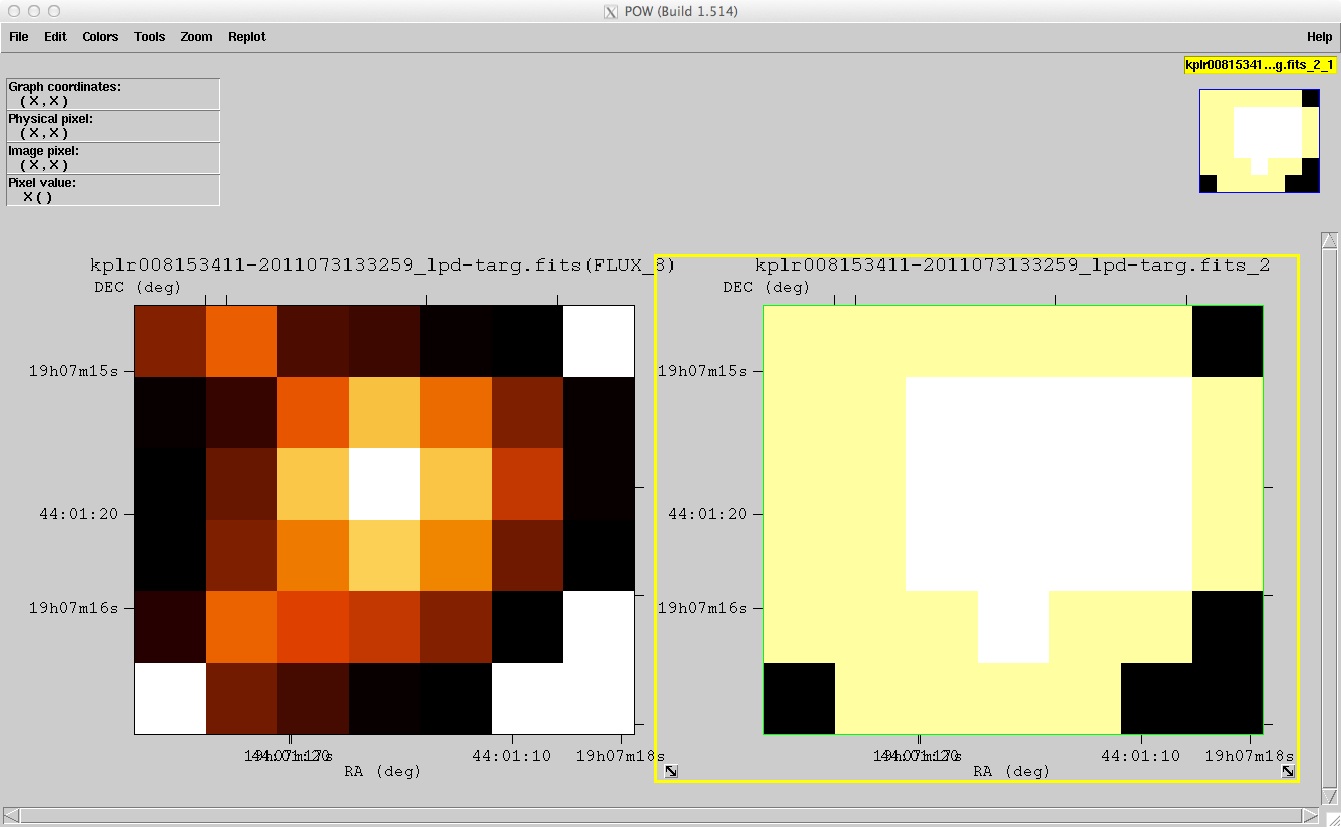|
|
|
||

| |||
| Data Inspection | |||
|
TARGET PIXEL FILE INSPECTION WITH FV
Kepler Target Pixel Files (TPFs) are provided to the user in the form of binary FITS tables, one file per target. Each row in the table contains timestamps, photometric measurements, astrometric measurements and data quality flags. A format description and content definition of the TPFs is provided in section 2.3.2 of the Kepler Archive Manual. Each row of the photometric columns contains a pixel image of the target. We have found the best tool to inspect the structure and content of the TPF is the GUI-driven HEASARC tool FV. We provide a specific example of TPF product inspection using FV. After starting up the FV application, the primary GUI will open. i) LOAD DATA
The file summary GUI will open, containing the same structure as illustrated in figure 1. Each row in the summary is a data extension within the FITS file. All header keywords within the extension will be provided if you click on one of the "Header" buttons. The "Hist" and "Plot" buttons provide histograms and line plots of tabulated data. 
Figure 1: FVs summary GUI, providing the high-level structure of a TPF. ii) INSPECT TABULATED DATA
Figure 2 contains the result of this operation - the table of time-tagged data within the TPF. Time, quality and astrometric data are scalar values in each row of the table. Flux data contain pixel arrays are are not displayed directly in this format. Instead, the table provides an "Image" button. 
Figure 2: An FV table of the time-tagged data stored within the TPF. iii) PLOT TARGET IMAGES This procedure results in the plot provided in figure 3.

Figure 3: Typical images stored within a TPF. The left-hand image is stored in the time-tagged data table and contains calibrated, background-subtracted and cosmic ray removed pixel fluxes. The right-hand image contains a bitmap that describes the employment of each pixel. Black pixels are not collected, yellow are collected but do not contribute to the photometry stored in the light curve products. White pixels are included in the photometric aperture that maximizes target signal-to-noise over nominal short timescales of observation. |
Questions concerning Kepler's science opportunities and open programs, public archive or community tools? Contact us via the email address.